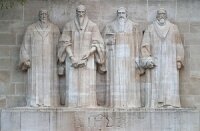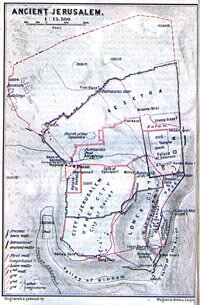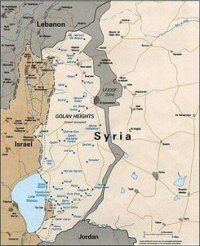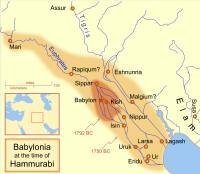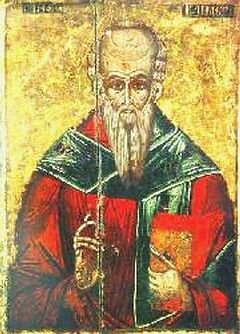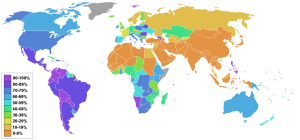 Edom (אֱדוֹם), a Hebrew word meaning "red", is a name given to Esau in the Hebrew Bible (see Gen. 25:30), as well as to the nation purportedly descended from him. The nation's name in Assyrian was Udumi; in Greek, Idoumaía; in Latin, Idumæa or Idumea.
Edom (אֱדוֹם), a Hebrew word meaning "red", is a name given to Esau in the Hebrew Bible (see Gen. 25:30), as well as to the nation purportedly descended from him. The nation's name in Assyrian was Udumi; in Greek, Idoumaía; in Latin, Idumæa or Idumea.The Edomite people were a Semitic-speaking tribal group inhabiting the Negev Desert and the Aravah valley of what is now southern Israel and adjacent Jordan. The region has much reddish sandstone, which may have given rise to the name "Edom". The nation of Edom is known to have existed back to the 8th or 9th Century BCE, and the Bible dates it back several centuries further. Recent archeological evidence may indicate an Edomite nation as long ago as the 11th Century BCE, but the topic is controversial. The nation ceased to exist with the Jewish-Roman Wars.
The Edomites
The Edomites may have been connected with the Shasu and Shutu, nomadic raiders mentioned in Egyptian sources. Indeed, a letter from an Egyptian scribe at a border fortress in the Wadi Tumilat during the reign of Merneptah reports movement of nomadic "shasu-tribes of Edom" to watering holes in Egyptian territory.In the Bible
The Bible explains the name "Edom" with no mention of red rock. It refers to the Edomites as descendants of Esau, and the Book of Genesis mentions "red" a number of times in describing Esau and explaining his alternate name Edom."The first one [Esau] came out reddish [admoni in Hebrew], as hairy as a fur coat. They named him Esau." Years later, "Jacob was once simmering a stew, when Esau came home exhausted from the field. Esau said to Jacob, 'Give me a swallow of that red stuff [ha-adom, ha-adom, i.e., using the word ha-adom twice]! I'm famished!' He was therefore given the name Edom ['Red' or 'Ruddy']."
The Edomites' original country, according to the Tanakh, stretched from the Sinai peninsula as far as Kadesh Barnea. Southward it reached as far as Eilat, which was the seaport of Edom. On the north of Edom was the territory of Moab. The boundary between Moab and Edom was the Wadi Zered. The ancient capital of Edom was Bozrah. According to Genesis, Esau's descendents settled in this land after displacing the Horites. It was also called the land of Seir; Mount Seir appears to have been strongly identified with them and may have been a cultic site.
More...
